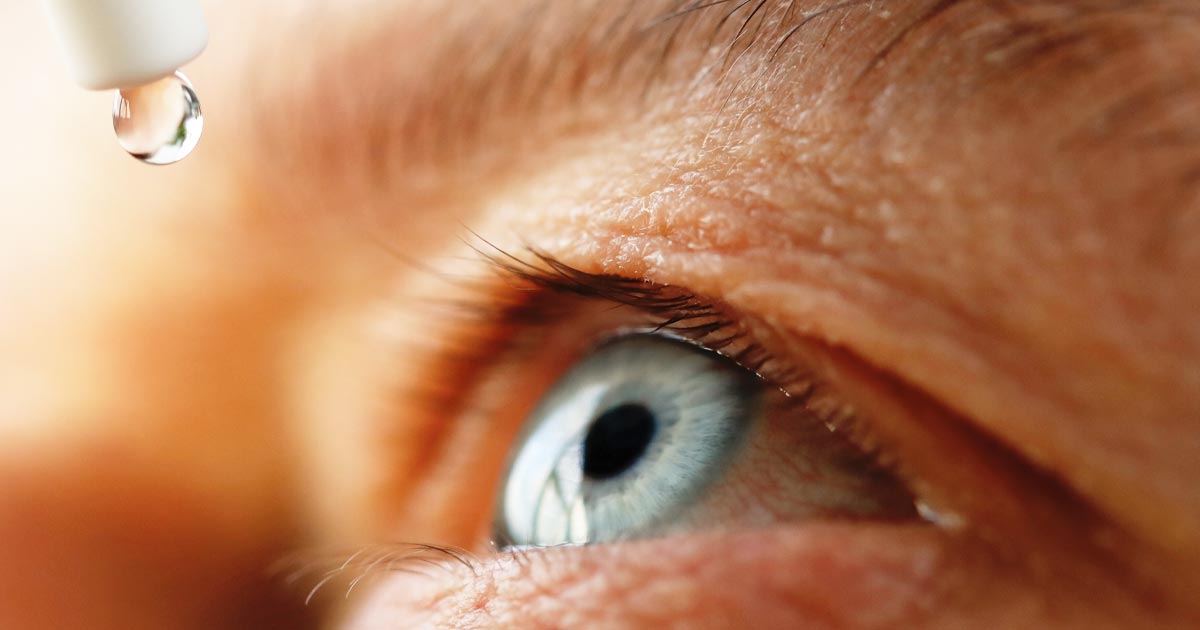If you’re over 60 years of age, you’re likely to be familiar with glaucoma, know someone who has it, or have been diagnosed with it yourself.
Glaucoma is an eye disease that causes damage to the optic nerve—the nerve that transmits images from the eye to the brain—and is often related to high pressure in the eye.
The disease impacts more than three million people in the United States and is one of the leading causes of blindness in adults over 60. Those who experience early signs of glaucoma may have difficulty with low contrast and have some loss of peripheral vision. Left untreated, glaucoma’s more advanced stages result in a reduced visual field and blind spots. These conditions ultimately progress to central vision loss.
Although usually associated with high eye pressure, glaucoma can occur even with normal pressure within the eyeball. That’s why it’s very important for adults, particularly those over 60, to receive yearly eye exams. Treated early, this eye disease can usually be successfully managed.
Individuals need to be especially aware of the danger of this common eye disease if they:
- Are over 60
- Have a history of eye trauma or multiple eye surgeries
- Have chronic eye conditions, such as a diabetic eye disease
- Are extremely near- or far-sighted
- Have a parent or sibling with glaucoma
- Regularly use steroid medications
- Are Black, Hispanic/Latinex, or of Southeast/East Asian decent
- Fortunately, recent years have seen several advances in glaucoma treatment. Some of these have already been approved, and some are in the early stages of development.
The standard first line of treatment for early-stage glaucoma is prescription eye drops. Many people do well with drops and are able to consistently reach their target eye pressures. However, some patients find eye drops to be too expensive or too hard to use, or they may experience side effects, like stinging or redness.
Recent drug advances have allowed some people who take more than one eye drop per day to use a single, combined drop (like Cosopt and Combigan).
New ways for delivering glaucoma drugs are currently in development. For example, a plug placed in the tear duct, a contact lens, or a small ring placed on the eye deep under the eyelid could slowly release medication over time. Doctors would be able determine the right route and amount of drug, to ensure patients reach their target pressures. They could feasibly lower pressure in the eye for months, without the need for eye drops.
Doctors are also researching a new class of medication that combines a traditional glaucoma drug (called Latanoprost) with nitric oxide. Nitric oxide lowers venous pressure in the episclera, an outer membrane of the eyes, so this combination may help lower pressure inside the eye even more.
If eye drops don’t work well, the next level of treatment for lowering pressure might be laser surgery. Then, if the glaucoma can’t be effectively treated with either drops or laser surgery, an invasive surgery called a trabeculectomy, or an implanted tube shunt, may be recommended.
Less invasive surgical treatments have also been developed in recent years, including MIGS: minimally invasive or micro-invasive glaucoma surgery. Such procedures let doctors treat patients earlier and more safely than more invasive surgeries. Each MIGS procedure involves implanting a tiny device to allow fluid to drain from the eye, reducing internal pressure. Some MIGS devices are implanted during cataract surgery. Cataract surgery alone lowers pressure, so in combination with MIGS, the pressure can be lowered even more effectively
With so many exciting developments in eye disease research, we can undoubtedly look forward to new glaucoma treatments that will make managing the disease increasingly easier and safer. ISI
Resources: Glaucoma Research Foundation, Mayo Clinic, John Hopkins Medicine










